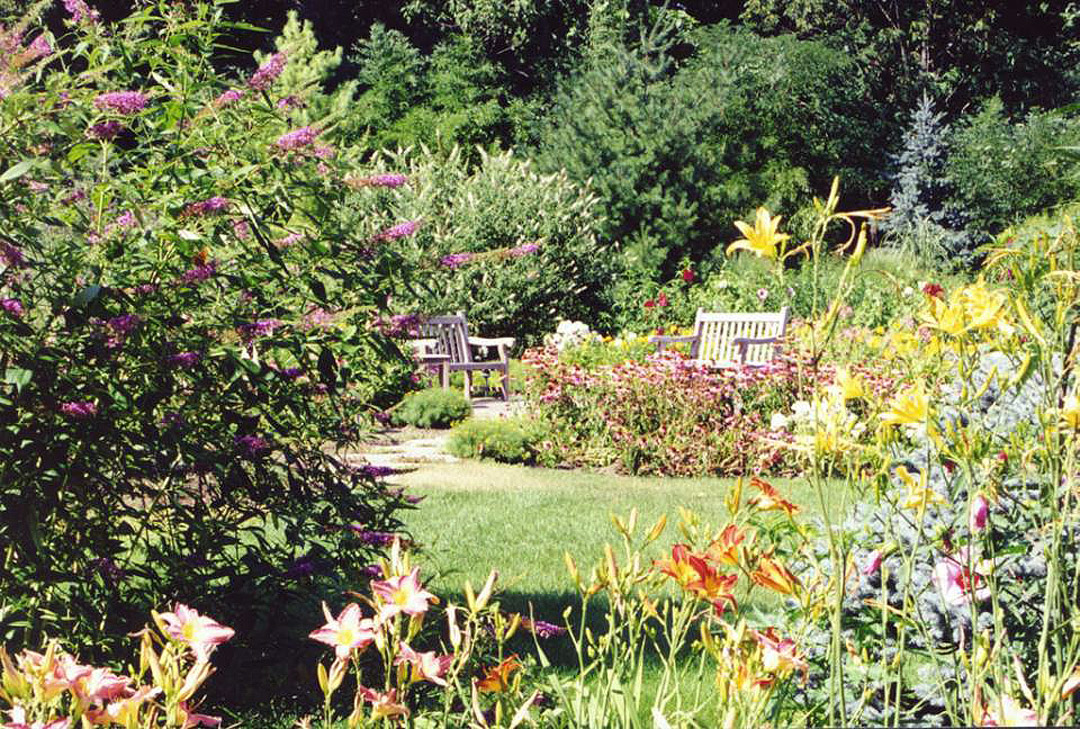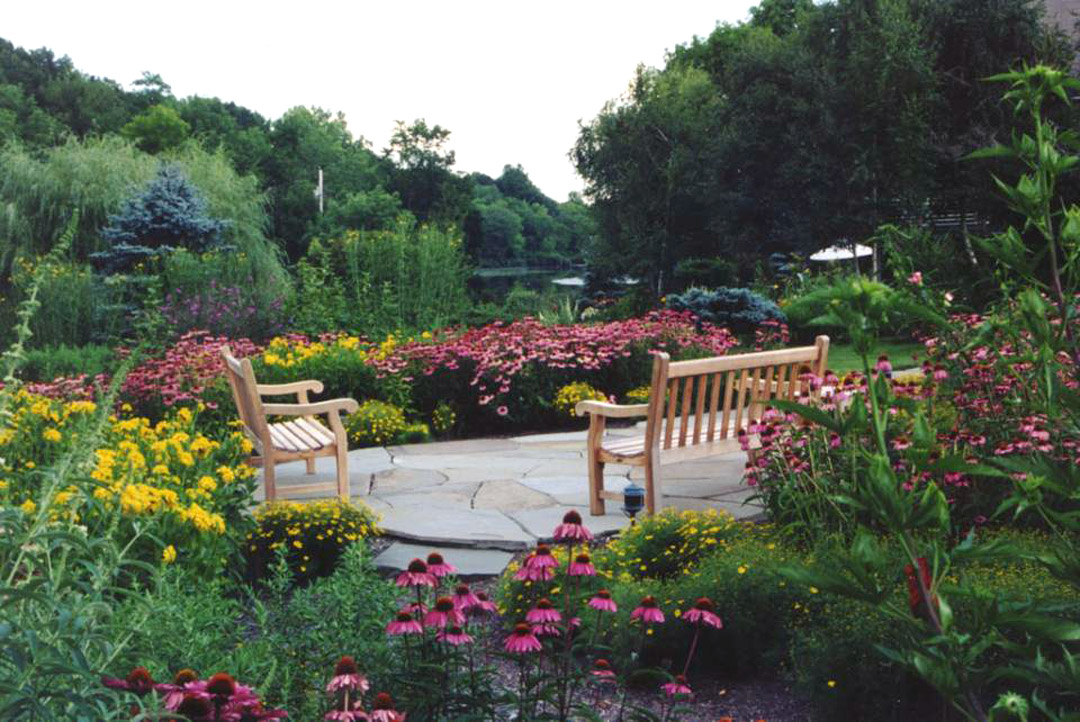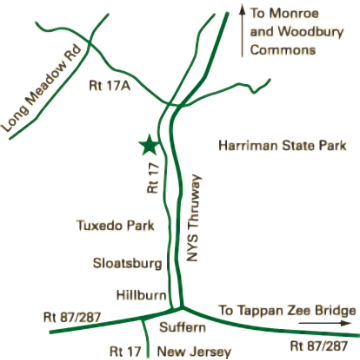
When done well, cottage gardens seamlessly blend colors, textures, forms, and year-round interest. There are flowers bursting with color in the company of herbs and other edibles. The Cottage garden uses informal design, traditional materials, and dense plantings. English in origin, it depends on grace and charm rather than grandeur and formal structure. Pastel shades and fragrant flowers are staples in the cottage style. The happy clutter complements the character of a house, often within the confines of a tiny lot.
Of course there are some standard rules to live by in a Cottage garden: plant close to promote informal crowding, deadhead, prune, periodically divide perennials, keep the garden on the small side and avoid straight lines, start by planting large clumps, repeat both plants and color to to create a flow and harmony, and keep the soil healthy. Consider adding some focal points when you first begin the garden. Strong feature plants, like shrub roses, flowering trees, Evergreens, and shrubs will prevent the look from becoming blurred. A cottage garden’s greatest appeal is that it seems to lack any conscious design. But even a cottage garden needs to be controlled; if there’s a failing in cottage gardening, it’s the idea that the garden can take care of itself. That is definitely not the case. In fact, a cottage garden can be high maintenance. You will want to maintain some order in your garden, or it will quickly become tangled and overgrown. Don’t expect it to look the same year after year. Let the plants be active partners in the creation of your garden.
If you’d like to surround your home with a cottage feel, you can start simply, by putting a small bed on either side of the path or drive to your house and continuing to expand it over the years. From there you can add additional paths and seating areas and other personal touches. Self-sowers will quickly fill in and you can divide and multiply perennials each year. Find a friend or two with similar tastes and swap plants, to expand your palette.
One of the greatest features of a Cottage garden are the loosely designed rambling paths, the paths are great to walk but also create access for weeding and maintenance. Choose a path material that compliments your home, such as bricks, stone, gravel and dirt, or even your homes paved walkway or drive. If at all possible, give the garden a backdrop. Hedges, rustic fences or even a wall, will serve as a background that brings the garden into focus. The addition of a picket or lattice fence that isn’t too tall is ideal to create a perimeter for the bounty of flowers to be contained as well as a nice garden gate to complement the scene. Personal touches such as, handmade trellises, bird baths and feeders, rustic table and chairs, rusty antiques, and any notes of whimsy can add the necessary character that is always found within a Cottage garden.
Traditional cottage plants contain numerous varieties of perennials, annuals, vegetables and foliage plants; old-fashioned hollyhocks, delphinium, iris, salvia, echinicea, phlox, bleeding heart, lady’s Mantle, peonies, shasta daisy, clethra, foxglove, snapdragon, heuchera, bee balm, mock orange, rose of sharon, rudbeckia, coreopsis, goats beard, hydrangea, catmint, true geraniums, Miss Kim lilac, allium, clematis, and roses deployed en masse.







